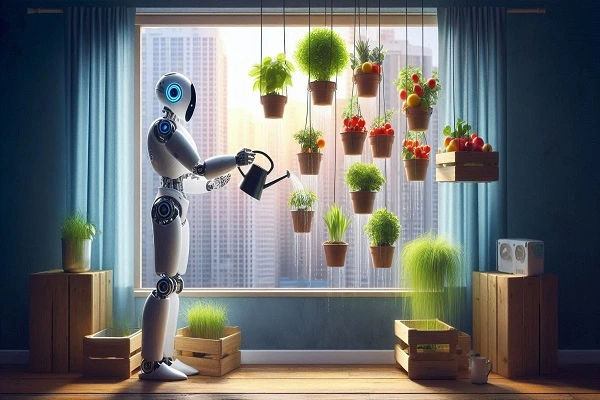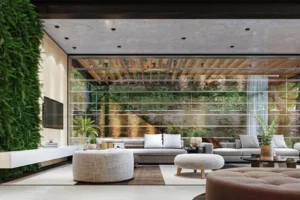Growing plants indoors can be tricky. Automation makes it simple by handling the hard work for you.
Smart soilless systems deliver water, light, and nutrients exactly when needed. No more guesswork or constant monitoring.
With the right setup, your crops grow faster, stronger, and healthier. You get bigger harvests with less effort.
Automation keeps conditions stable, so plants thrive in any climate. Reliable systems mean fewer mistakes and better results.
Want higher yields and stress-free gardening? Let technology take control while you enjoy the rewards.
Essential Automation Components
Automating your hydroponic system ensures your plants receive the right care at all times. These key tools help maintain a perfect balance.
Nutrient & pH Controllers – Plants need precise nutrient levels to thrive. Automated controllers monitor and adjust pH and nutrient concentrations, preventing imbalances that could slow growth.
Water Pumps & Timers – Consistent watering is crucial. Automated pumps deliver water at set intervals, keeping roots hydrated without drowning them or leaving them dry. This also reduces water waste.
Grow Lights & Climate Control – Timed LED lights provide the right amount of light each day, mimicking natural cycles. Climate sensors adjust temperature, humidity, and airflow to maintain an ideal environment for plant development.
With these automation tools, your plants grow efficiently, and you save time while maximizing your yields.
Step-by-Step Automation Guide
Setting up an automated hydroponic system can be easier than it seems if you follow the right steps. By taking the time to set everything up properly, you’ll have a smooth-running system that requires minimal maintenance. Here’s a simple guide to get you started.
Choose and install smart controllers
Start by selecting a smart controller that suits your system. These controllers manage essential tasks such as watering, lighting, and nutrient delivery, helping to automate the process. The controller should connect to your system and allow you to adjust settings like watering schedules, light cycles, and nutrient dosages. Many controllers also offer remote access, so you can monitor your system from your phone or computer, making it easier to manage your setup from anywhere.
Set up automated nutrient delivery
To ensure your plants get the proper nutrients without manual mixing, install a nutrient dosing system. These devices automatically dispense nutrients into the system based on a preset schedule or real-time data. You’ll want to pair this with a pH controller to keep the nutrient solution balanced. This automation reduces the risk of overfeeding or underfeeding your plants and helps them grow more efficiently.
Optimize light cycles and climate settings
Plants need the right light to thrive, so setting up automated grow lights is a must. Use timers to mimic natural light cycles, adjusting the duration and intensity of the light according to the needs of your plants. Additionally, setting up climate control is essential. Automated thermostats and humidifiers can keep your growing environment at an optimal temperature and humidity level, ensuring the best conditions for your crops.
Use monitoring apps for real-time adjustments
Many modern systems come with apps that let you track your plants’ growth and monitor the system’s conditions. These apps can help you see real-time data about the temperature, humidity, pH, and nutrient levels. If anything goes out of range, you’ll be alerted and can make adjustments quickly from your phone or computer. This gives you complete control over your system and helps you make informed decisions without being physically present.
By following these simple steps, you’ll be able to create an automated hydroponic setup that runs efficiently, maximizes plant growth, and saves you time. Once everything is in place, you can sit back and enjoy the results of your hard work!
Best Devices for Hydroponic Automation
When it comes to automating your hydroponic system, choosing the right devices can make a huge difference in your results. Whether you’re just starting or looking to upgrade, there are plenty of options to suit every budget and need. Here’s a look at the best devices you’ll want to consider.
Recommended Smart Controllers and Sensors
Smart controllers serve as the brain of your hydroponic system. They manage key tasks like watering, lighting, temperature, and nutrient delivery, ensuring everything runs smoothly without constant oversight. Look for controllers that allow you to automate all your system’s functions and integrate easily with other devices. Some controllers even offer remote access through apps, allowing you to monitor and adjust your setup from anywhere, which is especially helpful for busy growers.
In addition to smart controllers, sensors are essential for maintaining balance in your system. pH and nutrient sensors are critical for ensuring your plants get the correct nutrients in the right amounts. These sensors give real-time readings, so you can make adjustments before problems arise, keeping your plants healthy and thriving.
Budget vs. Advanced Automation Options
If you’re just starting out or working with a limited budget, there are plenty of affordable devices that can help you get started with automation. Basic controllers can handle watering and lighting schedules and are a great starting point for small systems. These budget-friendly options often come with simple interfaces and are perfect for beginners who want to try automation without a hefty investment.
On the other hand, if you’re looking for more advanced features, there are high-end options that offer greater control and precision. These systems can manage multiple functions simultaneously, including nutrient dosing, pH adjustments, temperature regulation, and real-time data tracking. Advanced automation systems also often come with mobile apps that let you monitor and control your setup remotely, making them ideal for those who want to take their hydroponic growing to the next level.
The choice between budget and advanced options depends on your goals and how much control you want over your system. Whether you start small or dive into more complex systems, you’ll find devices that can meet your needs and help automate your hydroponic garden effectively.
Troubleshooting & Optimization
Even with automation, things may not always go as planned. The good news is that most issues are easy to fix with a bit of troubleshooting. Let’s go over some common problems and how to address them, along with tips for optimizing your system for maximum results.
Common Automation Pitfalls and Fixes
A frequent issue is sensor malfunctions. If your pH or nutrient sensors are giving inaccurate readings, it could be due to poor calibration. Regularly calibrating your sensors and cleaning them will prevent errors and ensure accurate measurements.
Another common issue is water pump failure. If your pump stops working, the first step is to check if it’s clogged. Clean the pump regularly to avoid blockages, and always ensure it’s connected to a reliable power source. Double-check your timers as well, as an incorrect setting can lead to insufficient watering or over-watering.
If you notice lighting issues, like lights not turning on or off at the right times, the cause could be an incorrect timer setting or faulty wiring. Check the timer and reset it if necessary. For more complex systems, you may need to inspect the power connections to the lights.
Temperature and humidity fluctuations can also cause problems. If your system isn’t maintaining stable conditions, it’s possible that your sensors need recalibration. Regularly check the environment and adjust settings to keep everything within the ideal range for plant growth.
Fine-Tuning for Maximum Yield
Once you’ve solved any immediate issues, it’s time to focus on fine-tuning your setup for better results. Start by closely monitoring your plants’ growth patterns and adjusting nutrient, water, and light schedules accordingly. For example, during certain growth stages, plants may require more light or nutrients. Automated nutrient delivery allows you to adjust these levels as needed.
Monitoring and adjusting is crucial for optimization. Many systems let you track environmental factors such as temperature, humidity, and nutrient levels. Use this data to fine-tune your setup and make timely adjustments based on your plants’ specific needs.
Additionally, consider adjusting watering schedules to match the growth stage of your plants. Younger plants need less water, while mature ones may require more frequent watering. Customizing your watering cycles ensures that plants receive optimal care and grow efficiently.
Finally, don’t overlook the importance of routine maintenance. Regularly clean all components, including pumps, sensors, and lights. Checking for wear and tear ensures everything continues working at its best.
With a little troubleshooting and fine-tuning, your automated hydroponic system will run smoothly, allowing your plants to thrive and providing you with the best possible harvest.
Final Thoughts
Automating your hydroponic system offers a range of benefits that can transform the way you grow. It takes the guesswork out of plant care, ensuring that your crops get the perfect balance of water, light, and nutrients. This not only makes your system more efficient but also boosts plant health and yield. The result? A smoother growing process with less manual effort, more consistent results, and healthier plants overall.
If you’re new to hydroponics or automation, there’s no need to jump in with a complex setup right away. Start small with the essential automation tools, like a basic smart controller or timer. As you grow more comfortable and understand your system’s needs, you can gradually introduce more advanced features like nutrient dosing and climate control.
By taking this gradual approach, you’ll gain confidence, avoid overwhelming yourself, and still be able to see great results. Whether you’re growing herbs, leafy greens, or more advanced crops, automation will help you streamline your process and enjoy the rewards of efficient, productive gardening. Start small, experiment, and expand as you learn. The possibilities for your hydroponic garden are endless.




